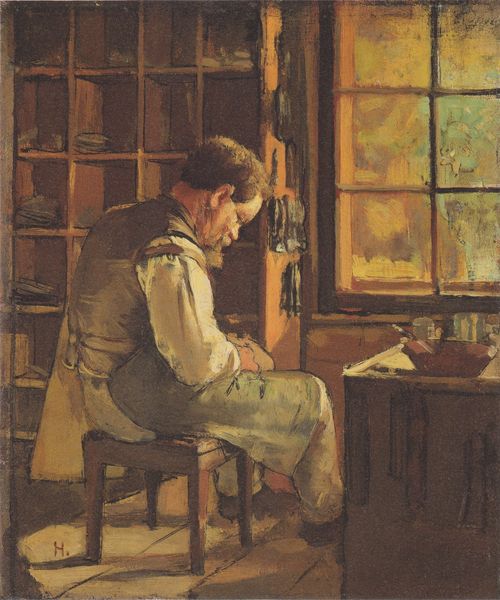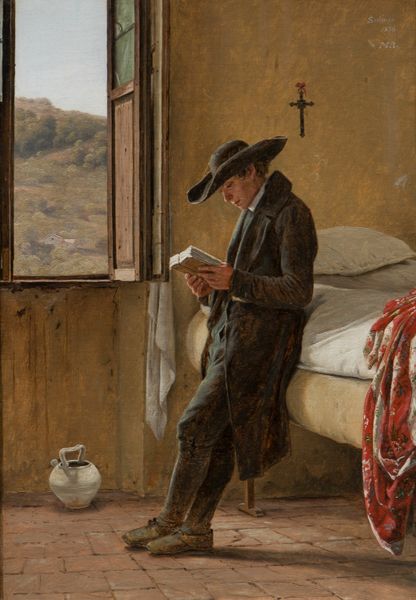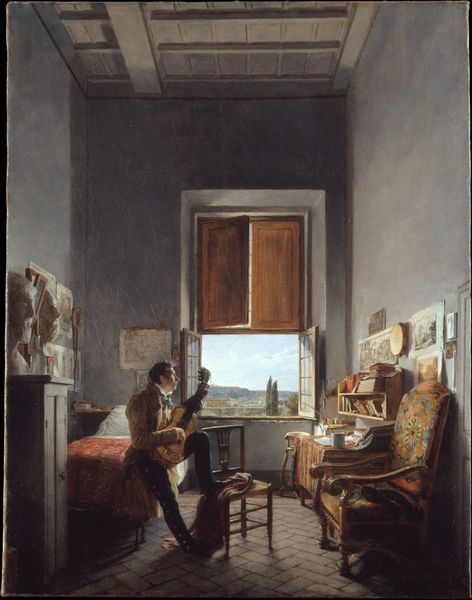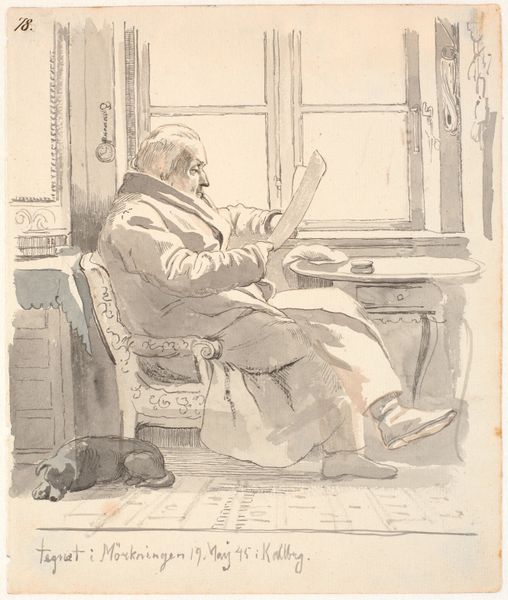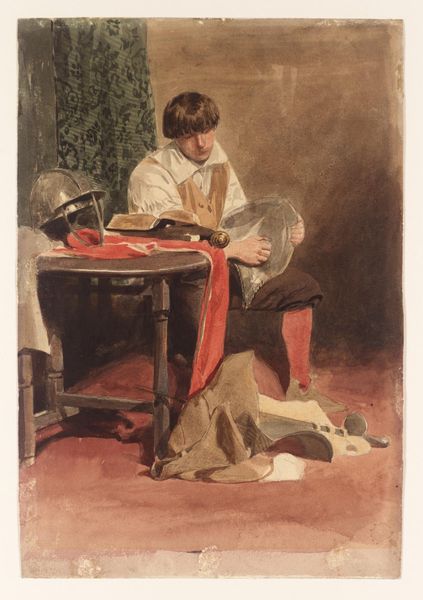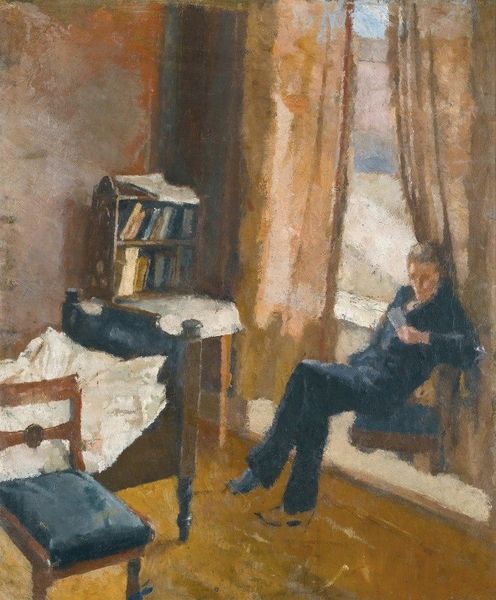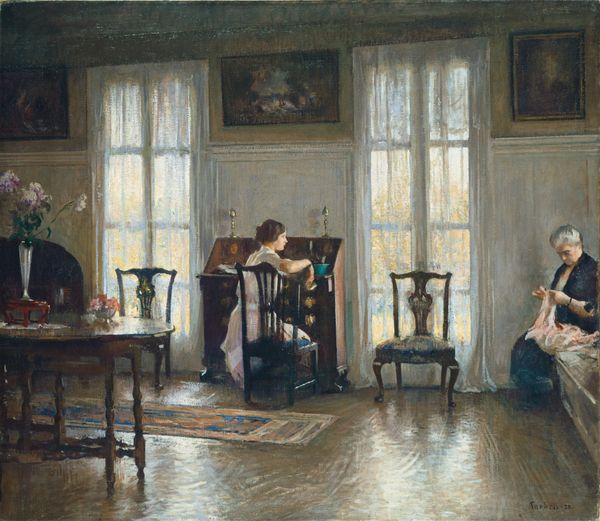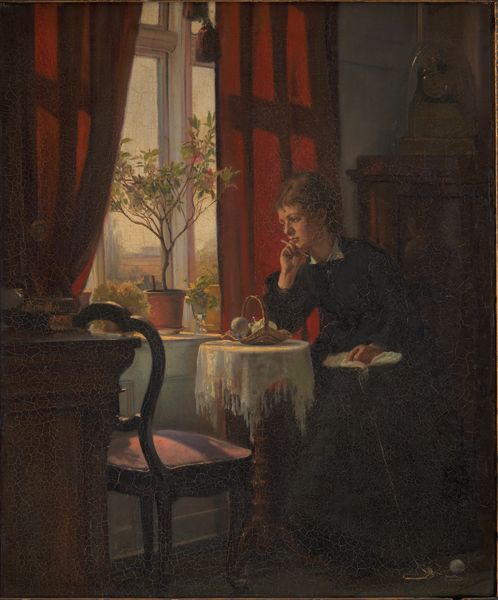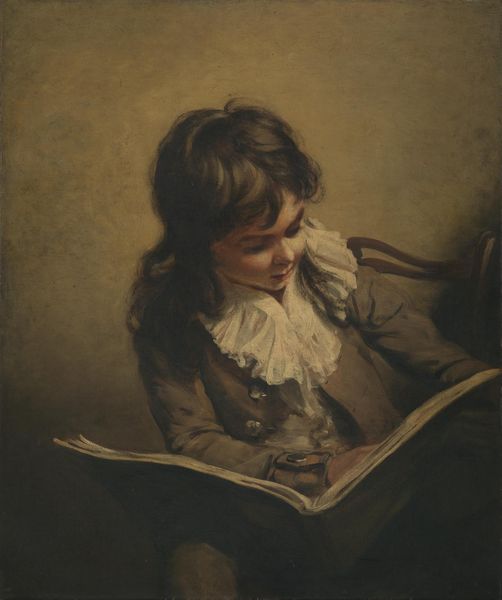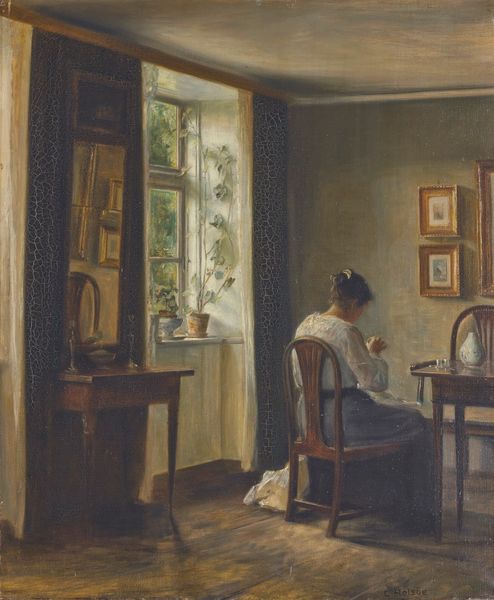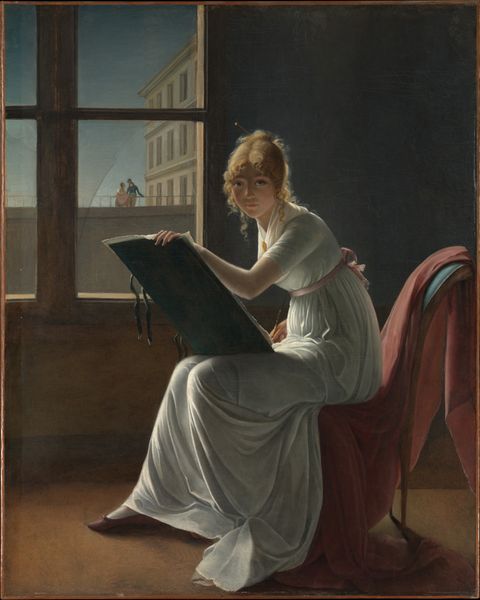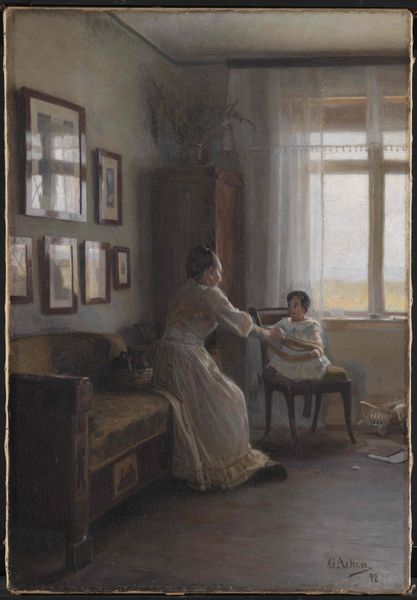
painting, oil-paint
#
portrait
#
painting
#
oil-paint
#
oil painting
#
genre-painting
#
musical-instrument
#
realism
Dimensions: 150.0 x 103.0 cm
Copyright: Public Domain
Curator: Here we have Otto Scholderer’s "The Violinist by the Window," painted in 1861. The artist captures a young man poised at an open window, his violin resting in his hands. Editor: The light is what first grabs me—soft and diffuse, bathing the room in this sort of melancholic glow. It almost feels like a Vermeer painting, the way the light interacts with the interior space and the figure. Curator: You've touched on something important there. The play of light is deliberate, enhancing the atmosphere, certainly. Windows in paintings are powerful symbols – they are literally a way into and out of worlds. In this case, does it denote escape or contemplation, perhaps even restriction? Editor: Definitely a sense of longing. Look at the way he's gazing out. It makes me wonder about the social constraints of the time. Was art one of the few acceptable escapes from expected roles? And his music is it, then, both his expression and potential route to something beyond this room. It brings forward issues of freedom of expression within 19th-century social structures. Curator: That makes me consider how the instrument acts as a visual shorthand, denoting more than mere aesthetic pursuit. The violin here also recalls centuries of artistic representation of the “divine gift,” “inspiration,” and other notions of a high calling or genius. What a privileged life for someone that we might see as one pursuing something greater. It also invites an intimate understanding of his world beyond his walls through art. Editor: I hadn't thought of it like that, as representing a kind of “divine gift,” but it definitely enhances the complexity. Thinking about the social role of musicians and how they were perceived also comes to mind. Curator: Well, on reflection, Scholderer presents us with an intimate, multifaceted depiction, blending realism with romanticism and a clear invitation to consider a potent combination of music, societal roles, and that constant artistic question: escape. Editor: It’s incredible how much emerges from just a single figure in a room with a violin! So much historical, cultural weight brought forth with this artwork.
Comments
stadelmuseum about 2 years ago
⋮
A musician sits at the window gazing wistfully at the world outside. Scholderer here revisits a German Romanticist motif. Having begun his studies at the Städelschule, the artist went to Paris, where his contact with Courbet, Fantin-Latour and Manet had a formative influence on his style. In Germany there was hardly an audience for his work. Following sojourns in Kronberg, Düsseldorf and Munich, Scholderer went to London, where he remained for nearly thirty years. He returned to Frankfurt only shortly before his death, with the painting that is now considered his chief work in his luggage.
Join the conversation
Join millions of artists and users on Artera today and experience the ultimate creative platform.
